CES 2010 - USB 3, ITV/Media Streamers and Lots of eReaders
by Anand Lal Shimpi on January 6, 2010 12:00 AM EST- Posted in
- Trade Shows
Getting Legal and Illegal Content onto your TV
While I'd expect to see a lot of USB 3.0 stuff at CES, expect to see a number of set-top boxes designed to stream content to your TVs.
Seagate had its FreeAgent Theater+ HD media player on display. Either slide in a Seagate external 2.5" USB HDD or connect any other NTFS or HFS+ formatted USB storage device and the media player will allow you to play any contents on your TV.
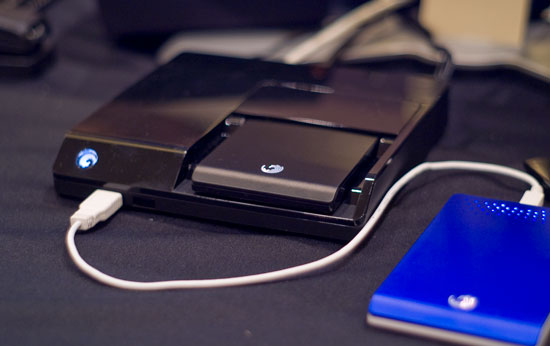
There's also ethernet support for wired networks and an optional wireless dongle. The set-top box will scour your network for movies in virtually any container format and let you play them on your TV. This generation of media players has no problems playing H.264 encoded content even in .mkv containers.
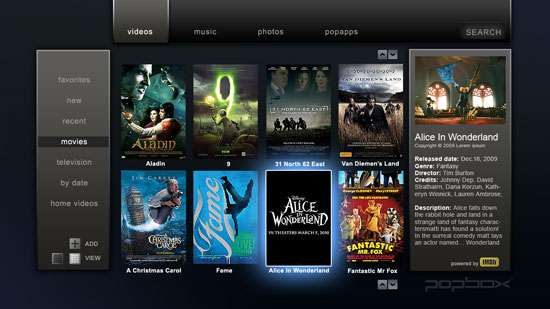
Enthusiast favorite Syabas Technology, makers of the Popcorn Hour, had their own set-top media player on display as well. It's a more content provider friendly device compared to the Popcorn Hour as it has no internal hard drive. It's called the Popbox and features much of the same hardware as the Popcorn Hour devices. It too can play virtually any video in nearly any container format. The Popbox lacks things like an integrated BitTorrent client to make it a bit more content-provider friendly (e.g. make it seem like not so much of a piratebox).

In a different approach we also have things like the Boxee Box by D-Link. Boxee is free software for your Mac, Apple TV, Windows or Linux PC that acts as an aggregator of online TV content. Nearly all TV networks allow you to access content online (with limitations), Boxee simply unifies access to all of that. Instead of going to five different websites to catch up on your shows, Boxee attempts to give you all of the TV content you want in a single 10-foot UI.
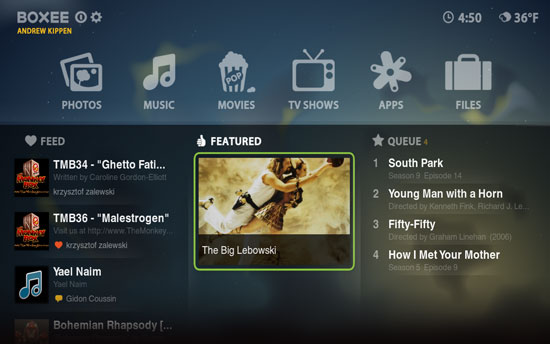
The Boxee Box by D-Link is a standalone set-top box that, when hooked up to the internet, gives you the same Boxee experience without a PC. This is yet another example of Moore's Law paving the way for low cost devices to do things that weren't possible just a few years ago.
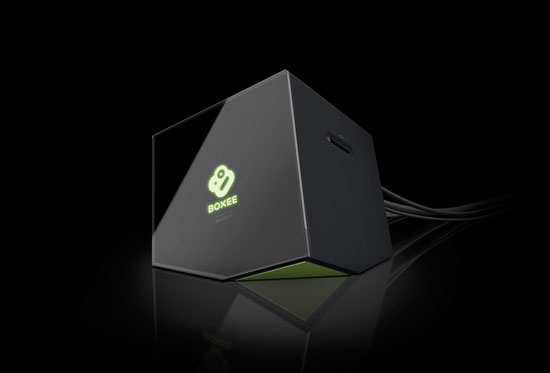
The Boxee software will continue to be available free on the web. The Boxee Box is simply for those users who want a simpler solution. Even Hulu support is technically there as Boxee uses a Mozilla browser to go out and grab the content before playing it full screen.
The Boxee Box doesn't only play internet TV content, it can also play any non-DRM content you might have access to.
It's a neat interface and the box will sell for under $200, like most others in this category. Boxee plans on announcing additional hardware details later this week.
The Boxee remote is ridiculously cool. On one side you get an Apple-inspired simple pointer remote, and on the other side you get a full QWERTY keyboard for typing in search strings to find TV shows to watch:
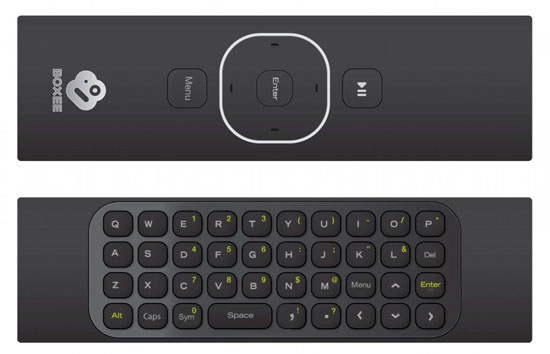
Playing H.264 content on your TV is no longer an issue. I'd say that by 2011 we can expect to see commoditization of H.264 media streaming boxes, and it won't be much longer before we can see this functionality integrated into all TVs. The question is whether or not the TV folks will get the UI down right.
Until then, it looks like you'll have a number of options for getting your content around the house and streaming internet TV content to existing TVs. Prices are looking to be in the $100 - $200 range for this sort of functionality based on what we've seen thus far.










14 Comments
View All Comments
mckirkus - Wednesday, January 6, 2010 - link
You don't need USB 3 to stream HD over a network. 15MB/second will easily saturate a 10/100 network and I don't know of very many blu-ray disks that top out at much more than 3MB/s. (that's megabytes)Of course if you backing up large files over a gigabit network to a USB hard drive then yeah, it makes sense.
jmurbank - Wednesday, January 6, 2010 - link
HD can easily handle on a 100 Mb network. HD bitrate is around 25 to 50 megabits per second. It is far from what you think. This is why the Sandstorm HD Homerun ATSC tuners can work. Sure it will help to have 1 Gb NIC, but that will be over kill. HD will over load a wireless network connection even 802.11n because wireless networks has a lot of over head.If I were backing up data, I would use IDE or SATA and screw USB.
rlthomas - Wednesday, January 6, 2010 - link
Do you mean 100Mb network can handle HD? Why screw USB, it's just another option? Do you mean eSATA? Portable HDD are handy.Lysh - Wednesday, January 6, 2010 - link
Well assuming it houses a 9.5mm drive, currently the highest capacity is 640GB.But 12.5mm, 1TB is the max then.